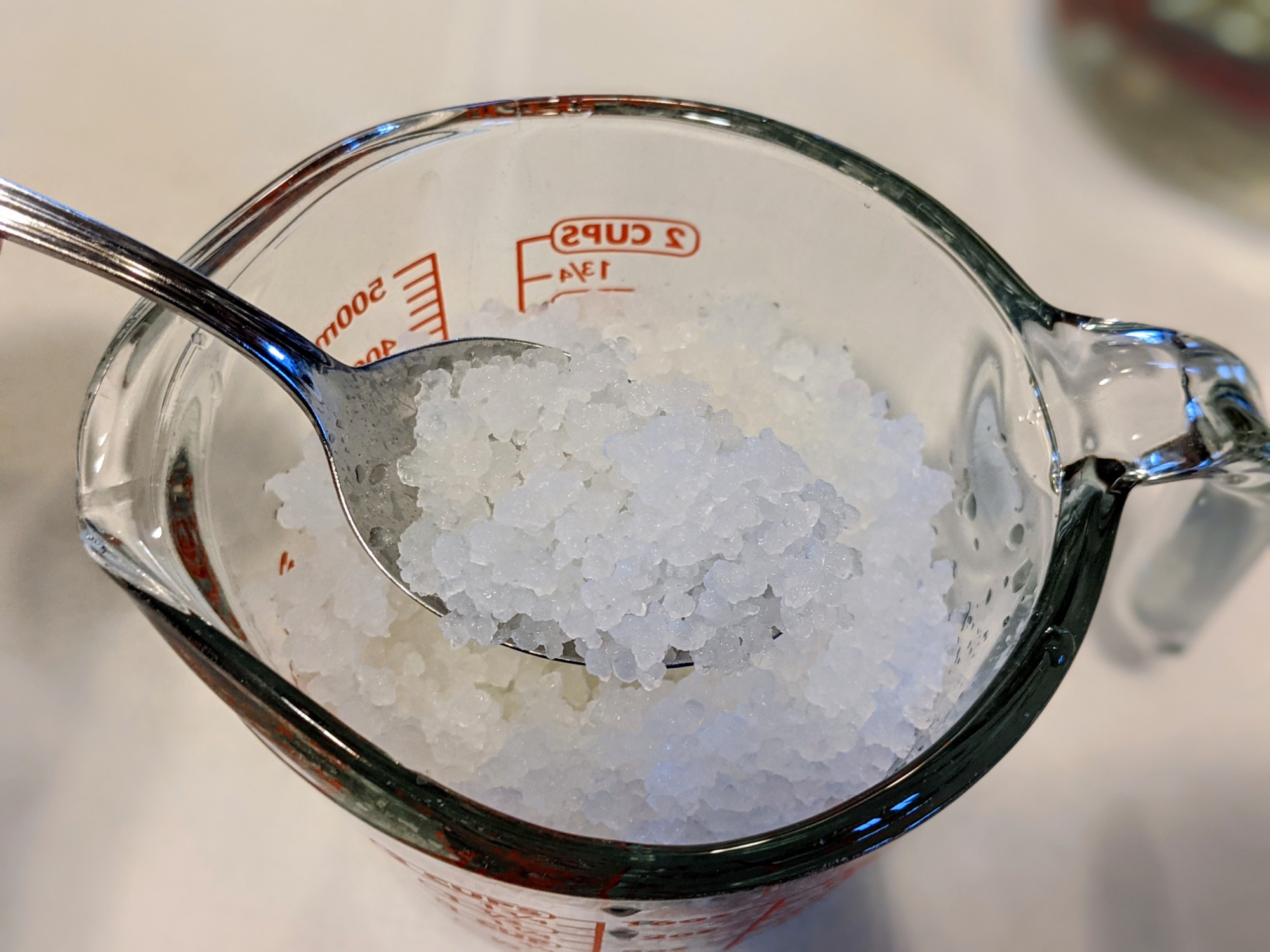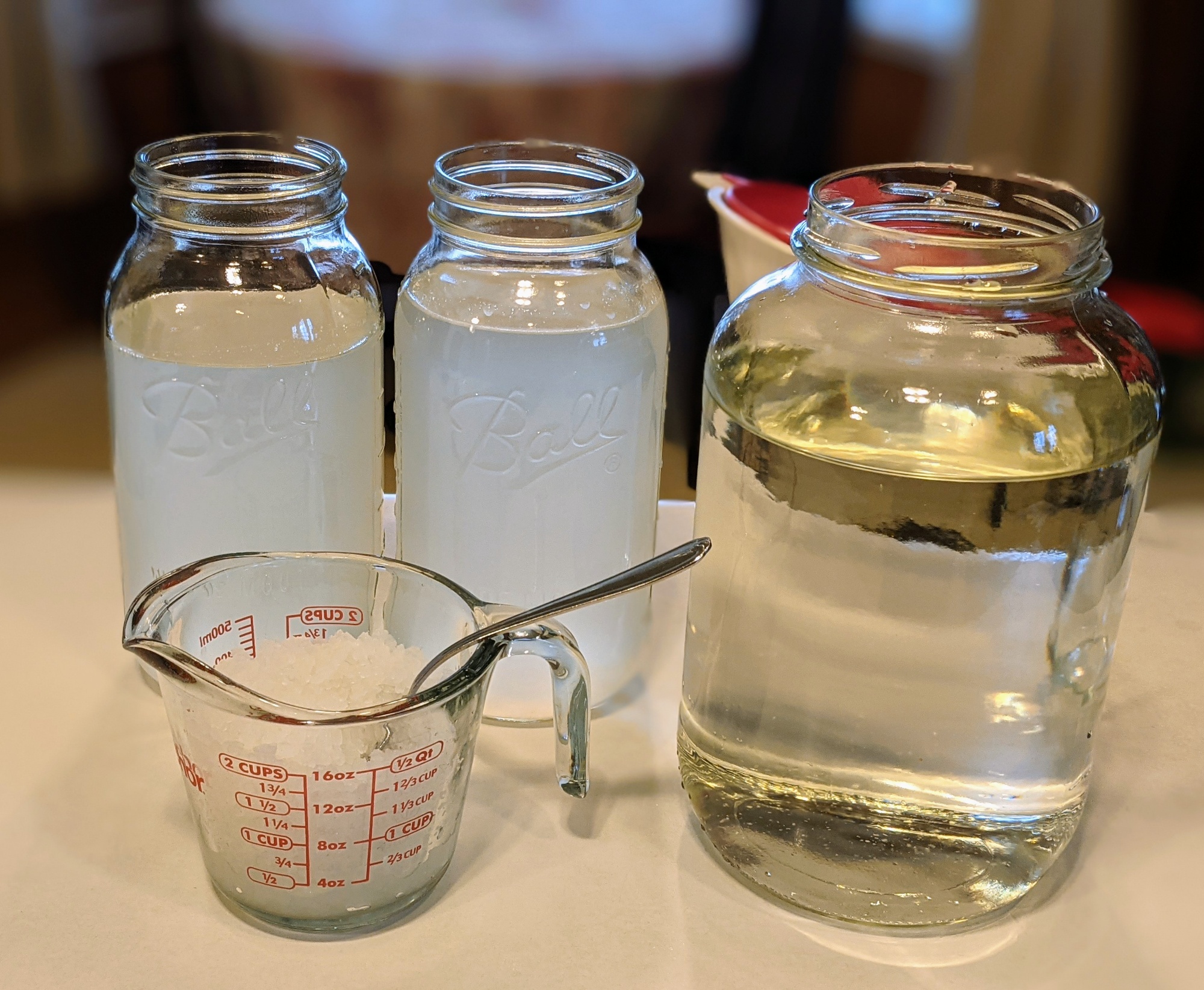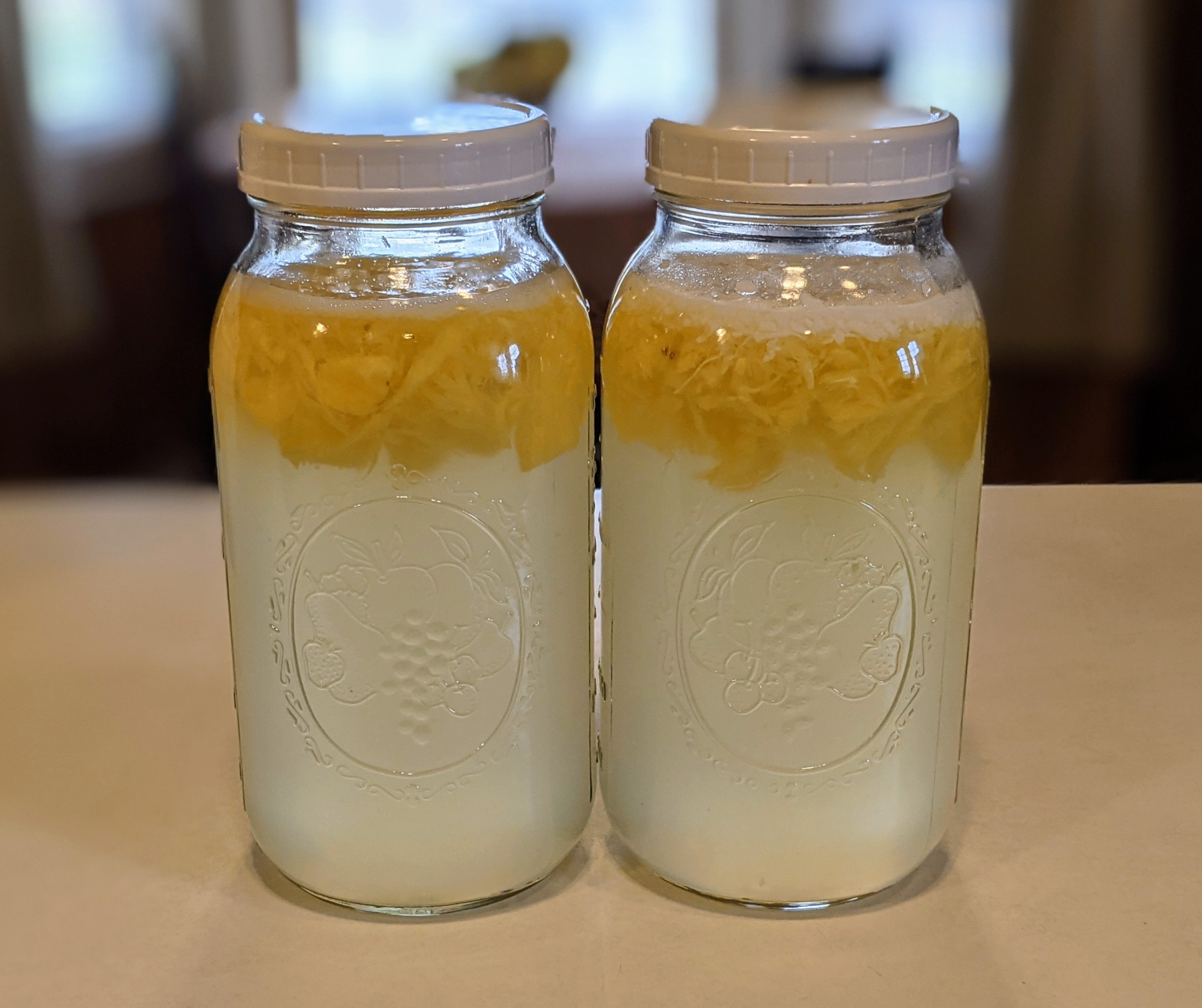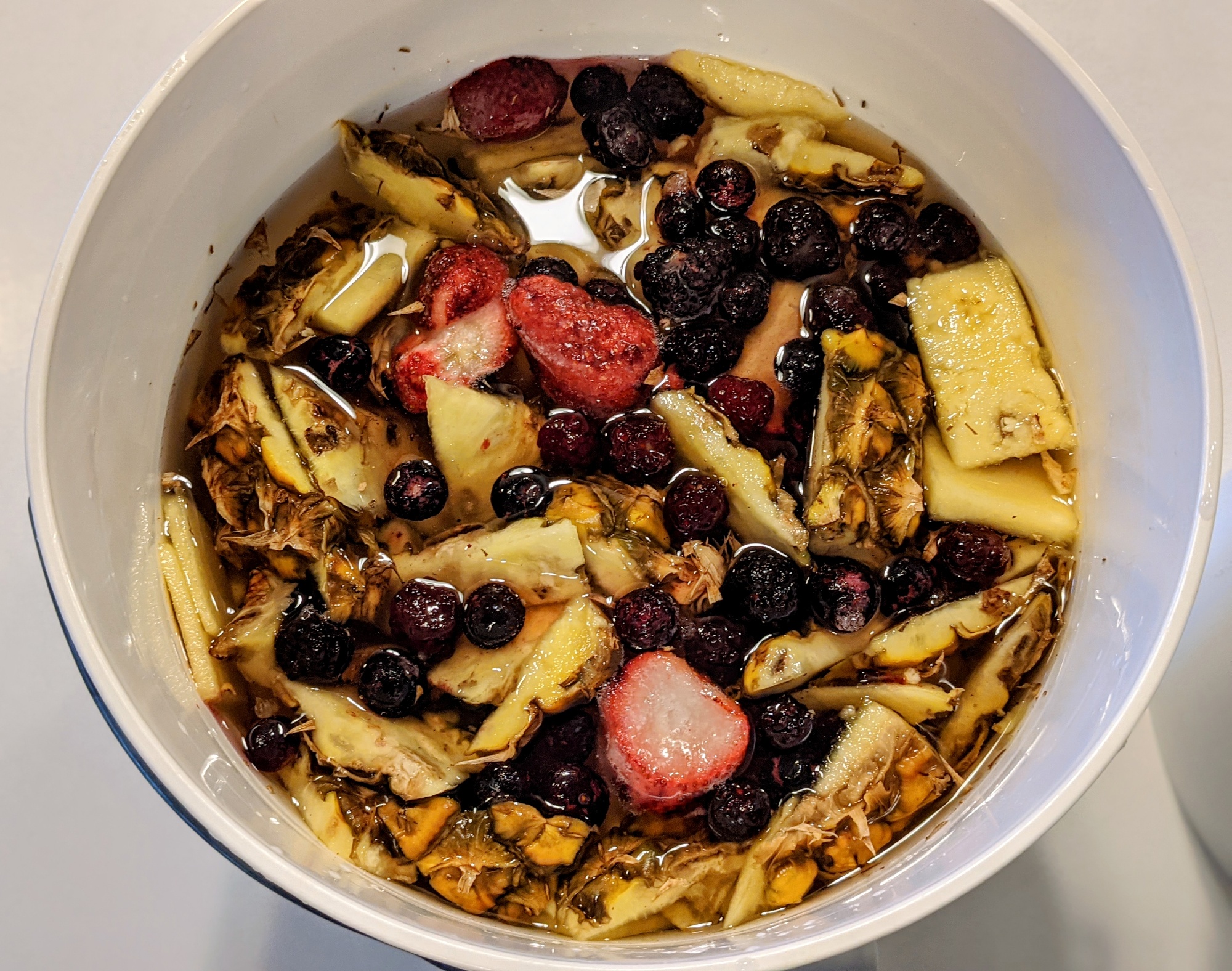
Happy New Year!! While it may technically be a holiday, ferments happen here on every day of the year. Here’s a peek at what’s fermenting!
Today was a “long” water kefir day (meaning the finished 1F was strained and a 2F begun, and another 1F was started with the grains). Like all cultures, water kefir needs to be fed regularly and appropriately – adding minerals periodically helps promote optimal health. My grains are very happy, reproducing well and making effervescent and delicious probiotic soda.

The 2F flavors I chose were fresh pineapple and pineapple/coconut (with dried shredded coconut). Who says you can’t enjoy a taste of the tropics even in these dark days of winter?

It was also a bread making day, and Audrey (our sourdough starter) has been active and was raring to go. Since it’s winter and the kitchen is cooler, it takes longer for the dough to rise than during the heat of summer, but it’s worth the wait – there are few aromas as lovely as freshly-baked bread wafting through the house. We’ll enjoy that rustic loaf tonight with a hearty bowl of homemade soup.

Last but not least, since I had already cut up a couple of pineapples for the water kefir, I started some pineapple peel-based wine. Pineapple peel, you ask? Yes – the peel and core (and any other bits cut from the pineapple, like bruised spots) may be used to create a crisp wine that is not only a treat to drink, but uses “waste” parts of the pineapple. And around here, it’s really no waste because after the spent pineapple is strained out, our pigs enjoy it along with the nutritious wine yeast. Today, I added some apple juice and frozen mixed berries to create a festive, easy-drinking wine that will have a nice blush hue. You “drink” with your eyes, too!

The tasty and beneficial products aside, fermenting teaches you patience: the water kefir takes around 48 hours to complete a 1F and another 24 to complete a 2F; the sourdough may take several hours to rise before it’s ready to bake; and wine typically takes at least several weeks and sometimes a year or more to ferment and age, depending on the ingredients. For some things in life, slowing down and respecting the need to allow a process to work in its own time – rather than trying to manipulate it to suit preferred timelines – is necessary. With that in mind, I go forth into 2021!
